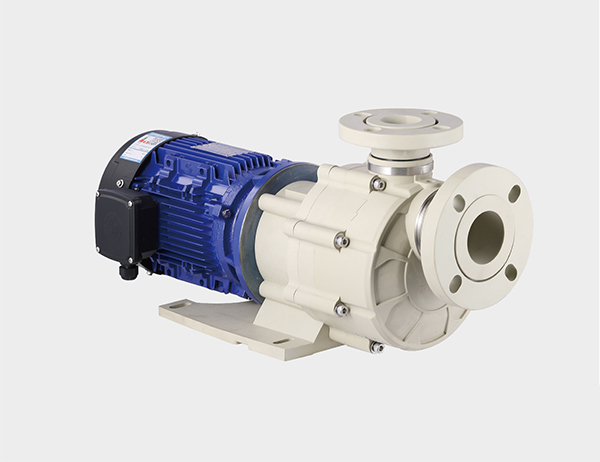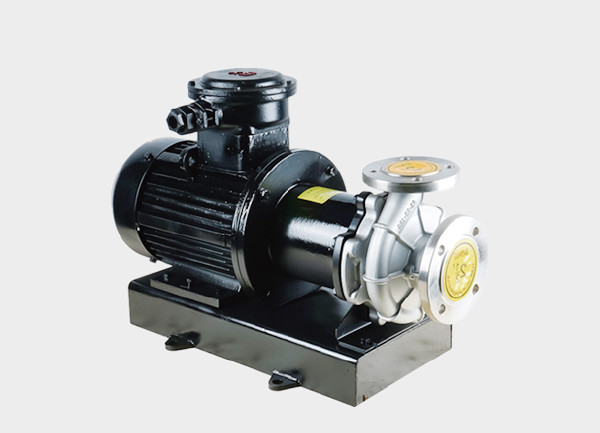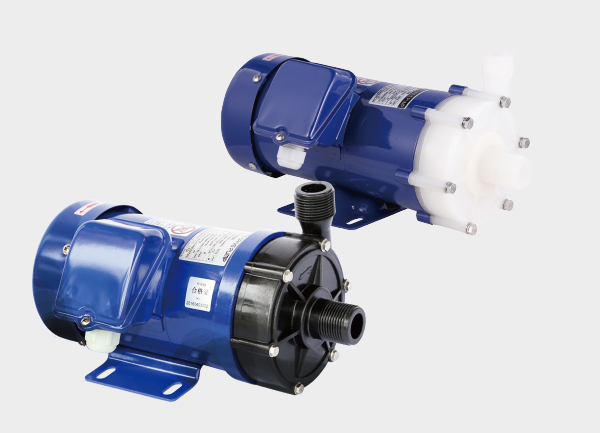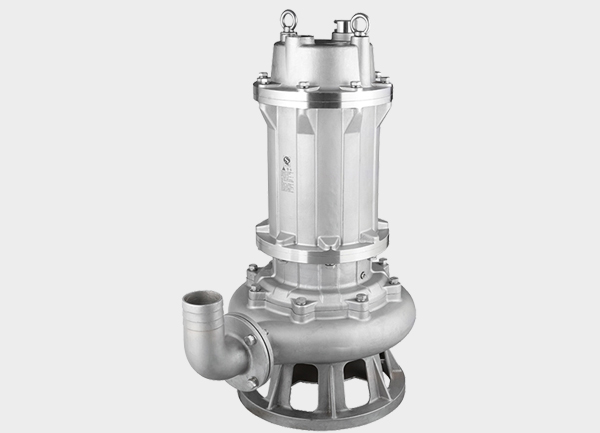Corrosion-resistant self-priming pumps combine self-priming capability with resistance to aggressive chemicals, making them indispensable in chemical processing, environmental engineering, pharmaceuticals, and electroplating industries. Unlike conventional centrifugal pumps that require manual priming, these pumps automatically remove air from the suction line and deliver acids, alkalis, salts, and organic solvents without leakage.
This article provides a comprehensive analysis of their working principles, structural design, material selection, classification, common failures, and industry development trends.

1. Working Principles: Achieving Self-Priming and Corrosion Resistance
The operation of a corrosion-resistant self-priming pump involves two main processes: self-priming and medium transfer.
1.1 Self-Priming Principle
Traditional centrifugal pumps cannot operate without initial priming. Self-priming pumps overcome this limitation through a gas–liquid separation cycle:
Pre-Start: A small volume of liquid is injected into the pump chamber (some modern designs operate with no priming liquid).
Gas–Liquid Mixing: When the pump starts, the liquid in the chamber is thrown outward by centrifugal force, creating a vacuum that draws fluid and air into the impeller.
Separation: In the gas–liquid separation chamber, air escapes through the vent, while liquid returns to the impeller for recirculation.
Completion: Once all air is expelled, liquid flows steadily through the discharge pipe. The process usually takes 30–120 seconds depending on pump size and suction line length.
1.2 Corrosion Resistance Principle
Corrosion resistance is achieved through:
Material Selection: All wetted components (impeller, casing, cover, seals) are made from corrosion-resistant materials such as PTFE, PVDF, stainless steel 316L, or Hastelloy.
Sealing Design: High-precision mechanical seals (SiC, alumina, Viton) or magnetic couplings ensure zero leakage, protecting both equipment and operators.
2. Key Components and Design Features
| Component | Function | Corrosion-Resistant Materials | Design Considerations |
|---|---|---|---|
| Impeller | Generates centrifugal force | PTFE, 316L SS, Hastelloy | Open/semi-open impellers for viscous media; optimized blade angles shorten priming time |
| Pump Casing | Houses separation chamber | PTFE lining, FRP, 316L SS | Large separation volume (1.5–2× chamber size) for efficient gas–liquid separation |
| Seal | Prevents leakage | Mechanical seals (SiC, alumina, Viton), Magnetic seals | Flush system for slurry media; magnetic seals for toxic/volatile chemicals |
| Self-Priming Device | Enhances priming | Same as casing | Built-in check valves to retain liquid; vacuum assist for viscous or gassy media |
| Motor | Provides power | Stainless steel housing, F/H insulation | Explosion-proof motors for flammable solvents; sealed shafts prevent gas ingress |
3. Types of Corrosion-Resistant Self-Priming Pumps
3.1 Based on Materials
Fluoroplastic Pumps (PTFE, PVDF): Exceptional chemical resistance, ideal for strong acids/alkalis. Limited to ≤120 °C and ≤1.6 MPa. Used in chemical pickling, electroplating wastewater, and semiconductor plants.
Stainless Steel Pumps (316L, Hastelloy): High strength, heat resistance up to 400 °C, suitable for viscous fluids and slurries. Not ideal for strong oxidizers (e.g., nitric acid). Common in pharmaceuticals, food processing, petrochemicals.
FRP Pumps: Lightweight, cost-effective, resistant to moderate acids/alkalis, but not organic solvents. Best for large-flow, low-head applications like wastewater treatment and cooling water circulation.
3.2 Based on Self-Priming Design
Internal Mixing Type: Gas–liquid mixing occurs inside the impeller. Compact and efficient, suited for small flows and high heads.
External Mixing Type: Mixing occurs in a separate chamber; better for fluids with small solids. Common in chemical reactors and wastewater with particles.
Magnetic Drive Self-Priming Pumps: Zero-leakage design, ideal for toxic or volatile solvents (e.g., methanol, ether, cyanide solutions). Higher cost and requires overload protection.
4. Pump Selection Guidelines
Correct selection ensures reliability and longevity.
Medium Characteristics:
Identify chemical composition, concentration, and temperature.
Match materials: e.g., Hastelloy for concentrated nitric acid, PTFE for hydrochloric acid.
Consider viscosity (>50 cSt requires open impellers) and solid content (>5% requires abrasion-resistant parts).
Operating Conditions:
Flow Rate (Q): Base on demand +10–20% margin.
Head (H): Total pipeline resistance ×1.2 for safety.
Suction Lift: Standard limit is 5–8 m; deeper lifts require vacuum-assisted or submersible types.
Safety & Environment:
Explosion-proof motors for flammable liquids.
Sanitary-grade pumps (FDA-certified) for food/pharma.
Weatherproof housings for outdoor or salt-rich environments.
5. Maintenance and Common Failures
5.1 Maintenance Best Practices
Regular seal inspection and replacement if leakage exceeds tolerance.
Prevent dry running with liquid-level sensors.
Flush pump with clean water after handling crystallizing fluids.
Replace motor bearing lubricants every 6 months with corrosion-resistant oils.
5.2 Common Issues
| Problem | Cause | Solution |
|---|---|---|
| Long priming time / failure | Insufficient priming liquid, air leakage, worn impeller | Add liquid, reseal pipeline, replace impeller |
| Leakage | Seal wear, casing cracks, loose bolts | Replace seals/casing, tighten bolts |
| Reduced flow/head | Clogged pipeline, broken impeller, motor speed drop | Clean/replace parts, check motor voltage/shaft |
| Vibration/noise | Impeller imbalance, misalignment, poor foundation | Balance impeller, realign motor, reinforce base |
6. Industry Development Trends
The evolution of corrosion-resistant self-priming pumps is driven by efficiency, safety, and sustainability:
Advanced Materials: Hybrid composites (metal + fluoroplastics, ceramic composites) for high strength and temperature resistance.
Energy Efficiency: High-efficiency hydraulic models and variable-frequency drives for 15–20% energy savings.
Smart Monitoring: IoT-enabled sensors for real-time leakage, vibration, and overload detection.
Zero-Leakage Technology: Magnetic coupling designs with higher head capacity (>150 m) and seal-free concepts like magnetic levitation impellers.
Corrosion-resistant self-priming pumps solve the challenge of handling aggressive fluids without manual priming or leakage. Their performance depends on accurate material selection, optimized structure, and proper application matching.
When selecting a pump, engineers must carefully evaluate medium characteristics, operating parameters, and safety requirements. With proper maintenance, these pumps offer long service life and high reliability.
As industries demand safer and greener fluid transfer solutions, future designs will focus on smarter monitoring, higher efficiency, and advanced zero-leakage technologies, ensuring they remain a cornerstone of chemical, pharmaceutical, and environmental processes.







